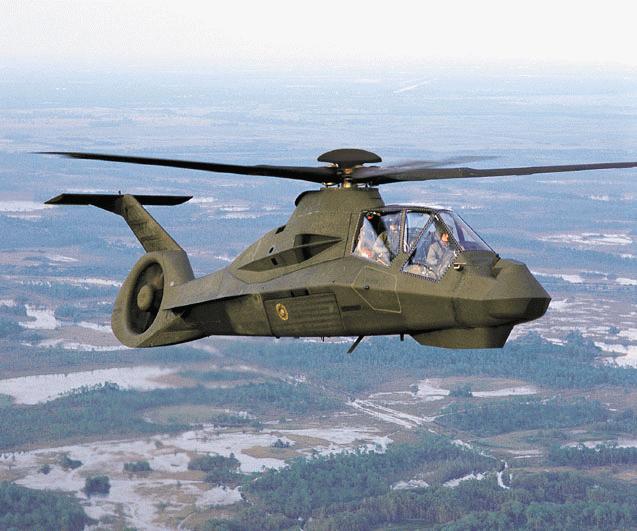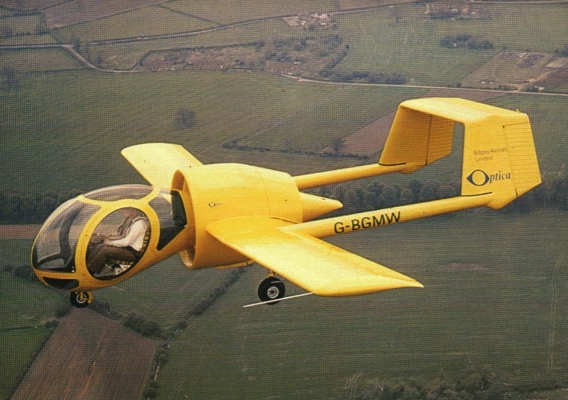SEEK—AND YOU WILL NOT BE SHOT AT SO OFTEN (you hope—arguably with good reason)

The above aircraft is THE SEEKER. It bears a remarkable resemblance to the Optica which featured in my first book, GAMES OF THE HANGMAN. Both were designed for reconnaissance, to be significantly cheaper to operate than a helicopter, had bubble cockpits, were equipped with pusher propellers, and could take off and land on rough terrain in extremely short distances. Both were inexpensive to buy and to operate.
I thought such an aircraft was a superb idea, and flew all the Optica scenes that feature in my book in the Optica. The whole experience was such a rush I don’t think I came down to earth for several days. What I particularly recall was the astonishing visibility from the bubble cockpit—plus the interesting experience of flying so low, we had to climb to get over a hedge. At over 120 mph, that gets your attention. Since the propeller was behind the cabin—which is why it is called “a pusher—engine noise was minimized, and you could see everything below and ahead. Add the necessary electro-optical equipment, and you can do much the same at night, and under most weather conditions. Beyond that, you can transmit what you see to the ground.

While airborne he learned that if you flew relatively low and slow, you could get to know the terrain below, and its inhabitants and their patterns of behavior, intimately—and keep the unit on the ground that you were overwatching relatively safe. You could warn it about ambushes, advise about the terrain, detect almost any unusual enemy activity—and call in artillery and/or air support if needed. In short, he learned that the combination of eyes in the sky, a keen intellect to interpret what was observed—the human factor—and boots on the ground, was extremely powerful. It was also common sense.
During the Iraq War, Greg wrote a paper recommending an airborne carpet made up of inexpensive Cessnas. True, the Army had helicopters, and the Air Force had fixed wing aircraft, but both were such expensive assets, and so costly to operate, that the skies were frequently empty. Much the same restrictions applied to drones.
Greg’s paper was ignored.
In 2005—while the situation in Iraq was deteriorating—a series of experiments was carried out using Seeker aircraft in the air and Jordanian forces on the ground. The idea was to see if Greg’s “aerial carpet” would work. Greg was not the only proponent of this concept, and the resultant paper was written by Navy Captain Dan Moore and others. It’s findings, in brief, were that the concept of combining inexpensive light aircraft with ground forces was highly effective.
This was scarcely a new discovery. During the invasion of France in World War II, Army Air Force General Quesada encouraged close cooperation between air and ground forces—to the extent that he had Air Force radios placed in tanks so that air and ground could communicate. At the time the Air Force was fighting to become an independent service, and Quesada was described as a “traitor” by some of his Air Force colleagues for cooperating with the Army. Appalling as it may seem, inter-service rivalries have long blocked inter-service cooperation to a degree that still threatens National Security.
The paper describing this successful series of tests was written for the IDA—the highly regarded Institute for Defense Analysis.
It was buried.
The U.S. Army was once described to me as “a curious anthropological institution.” It is a marvelous phrase, though I have no idea what it really means. What I can say is that the Army, though a commendable institution in many ways, is authoritarian, dominated by the MICC (Military Industrial Congressional Complex), and quite remarkably resistant to innovative thinking. It’s a sad thing; and who knows how many lives have been lost because of it.
 It is noteworthy that again and again, when a less expensive alternative is put forward, that the military almost always opt for the more expensive options—even when the less expensive item is operationally superior. The reason for this is that a great many senior officers have plans to retire into the MICC—and the MICC is powered by the money flow emanating from the Department of Defense. The money flow is based on expensive weapons systems—on programs that last for decades like the F-35 aircraft. In fact, some would argue that the best weapons procurement programs—as far as the generals are concerned—are decades long programs that never result in a usable weapons system. However they do make excellent retirement platforms. Recall the Crusader artillery system that never saw the light of day—and the Comanche helicopter. They are far from unique, and kept the money flowing. And then there was the Future Combat System—a truly massive program that was supposed to transform the American Way of War; and which was given to Boeing to manage in a deal that neither reflected well on Boeing nor on the Army. Massive amounts of money have a disturbing tendency to corrupt.
It is noteworthy that again and again, when a less expensive alternative is put forward, that the military almost always opt for the more expensive options—even when the less expensive item is operationally superior. The reason for this is that a great many senior officers have plans to retire into the MICC—and the MICC is powered by the money flow emanating from the Department of Defense. The money flow is based on expensive weapons systems—on programs that last for decades like the F-35 aircraft. In fact, some would argue that the best weapons procurement programs—as far as the generals are concerned—are decades long programs that never result in a usable weapons system. However they do make excellent retirement platforms. Recall the Crusader artillery system that never saw the light of day—and the Comanche helicopter. They are far from unique, and kept the money flowing. And then there was the Future Combat System—a truly massive program that was supposed to transform the American Way of War; and which was given to Boeing to manage in a deal that neither reflected well on Boeing nor on the Army. Massive amounts of money have a disturbing tendency to corrupt.
It is informative to examine where generals go when they retire. Almost without exception they join the MICC. They join the corporations they have been buying from. The issue of conflicts of interest does not seem to occur to them. They rationalize that defense contractors need their expertise and experience. That is rarely true. Contractors hire retired generals for their influence and—above all—their access. Retired generals can almost always get to see, and influence, serving generals. Serving generals want to see gainfully employed retired generals so that they can negotiate the job offers they will receive upon retirement. Much is done through suggestion and implication to preserve a façade of probity. The results speak for themselves.
Do all generals behave this way? No. Some are men and women of true integrity. However, the majority “go along to get along,” pay their dues to the club of generals, and feather their nests. Such behavior has become part of their culture, and thus considered acceptable—and we are all the poorer for it.
And so sound military thinking gets buried—and soldiers die—and the American Way of War becomes the most expensive in the world. But resources are limited so tough choices have to be made. Economists refer to this decision as: “Guns or Butter?” Typically, “Guns” wins out. A consequence of that is the U.S. has the worst social support system in the developed world and the worst healthcare system. As a result, not only is there vast misery, but Americans die younger—and are sicker before they die.
It is often argued that the first duty of a government is National Security. Most would agree. However, the security of a population is not just about fighting wars and killing terrorists. The real threats—the mass killers—stem from poor health, industrial food, a polluted environment, and acute stress stemming from lack of economic opportunity.
By the way, below is a picture of the Edgley Optica. As you will note, the cockpit fuselage is remarkably similar to that of the Seeker, but instead of an exposed propeller, the Optica used a five bladed ducted fan. This made the Optica extremely quiet—but adds weight. Beyond that, the Optica has a twin tail boom.
Though the Optica’s history has been unhappy, I thought it was a great little aircraft and am glad to hear it is now back in the hands of its original designer.
Which aircraft is superior—The Seeker or The Optica? I have absolutely no idea. My flight experience—which was entirely positive—was confined to the Optica. Either way, I like the concept.


I thought of you immediately i saw this.
ReplyDeletehttp://www.abpic.co.uk/photo/1036072/